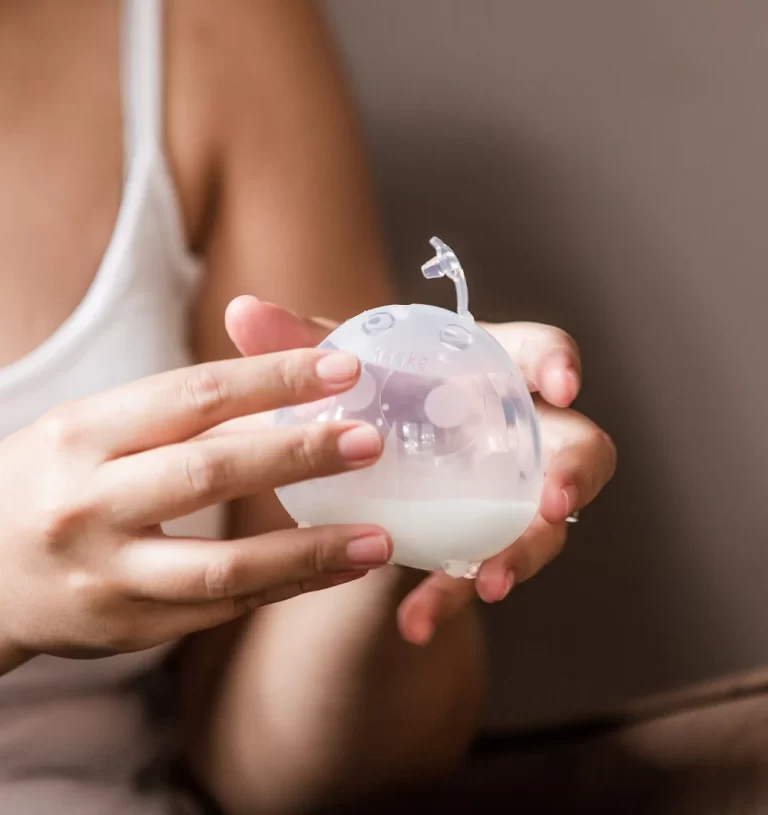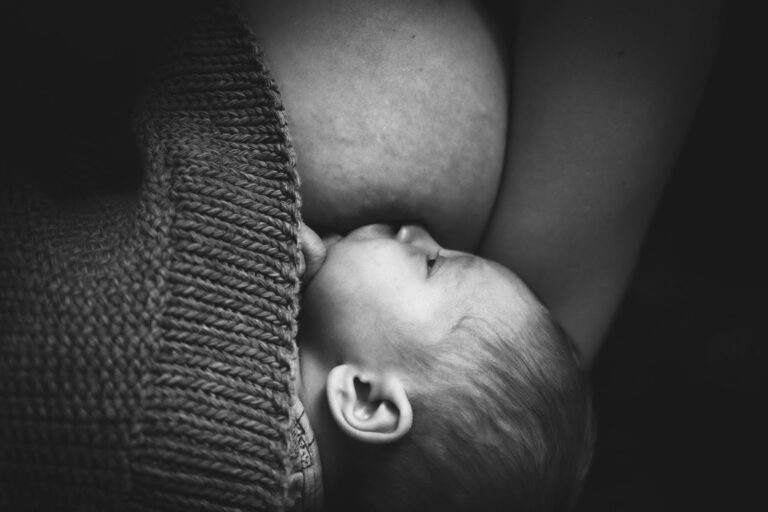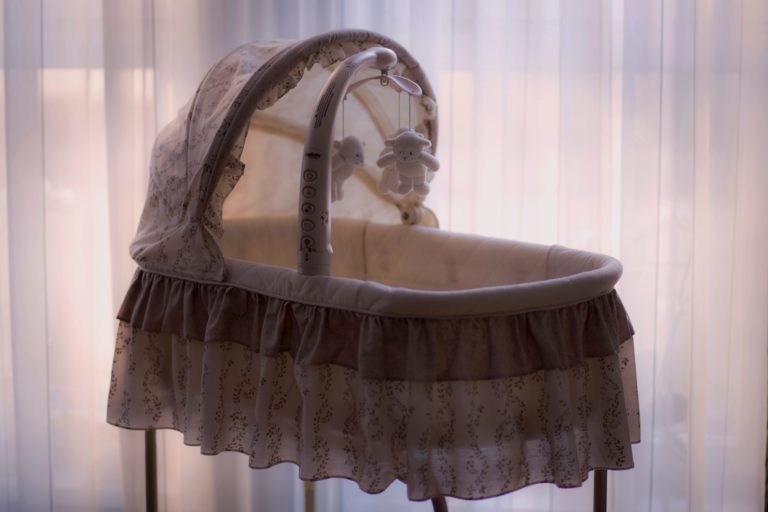Is My Baby Getting Enough Milk? How Much Your Baby Needs In Their First Year
8 minute read
No matter how you choose to feed your baby, you want to make sure your little one is getting the proper nourishment that they need.
But it can be hard to know if your baby is getting enough milk to stay happy, healthy, and reach all of their developmental milestones.
Whether you bottle feed, chest/breastfeed, or do some combination of the two… It’s always a good idea to respond to your baby’s hunger cues and feed them on demand.
It can also be helpful to have an idea of how much milk your baby needs depending on their weight, age, and nutritional needs.
If you have a newborn, 6 month old, or even 1 year old, this information can give many new parents the peace of mind you need to enjoy your baby’s feeding journey at every step along the way. Let’s dive in!
How to Know if Your Baby is Getting Enough Milk
As a general rule of thumb, if your baby is happy between feedings, gaining weight and producing wet and dirty diapers every day… You probably have a well-fed baby that is getting plenty of milk!
But even if everything seems “ok” you may still wonder if your baby is getting the right amount of milk that they need. That’s where it can be helpful to have a little more information about the amount of milk your baby needs based on their age. Let’s take a look.
 The Amount of Milk Your Baby Needs
The Amount of Milk Your Baby Needs
By the time your baby is a month old, they should eat around 32 ounces of milk a day (AAP).
That being said, as your baby grows throughout their first year and beyond, they’ll learn new skills, go through growth spurts, and may need different amounts of milk along the way.
Generally, your baby will need 2.5 ounces of milk/infant formula for every pound that they weigh (AAP).
So, if your baby weighs 8 pounds, they would need 20 ounces of milk a day
Whereas a 10 pound baby would probably need closer to 25 ounces of milk.
But without doing the math, here’s an idea of how much milk does your little one will need:
How Much Milk Does Your Baby Need by Age
Newborns up to 1 week old: Will drink around 1-3 ounces of milk per feeding (AAP). Babies at this age will typically eat every 2-3 hours, or 10-12 times in a 24 hour period.
By one month, your baby will likely drink around 24 ounces of milk in a 24 hour period. As they grow, your little one’s tummy will get bigger and they’ll be able to drink more milk during each feeding session — usually 3-4 ounces per feeding. They may want to eat every 3-4 hours.
And by six months old, your baby may drink 4 or more ounces per feeding every 3-6 hours. This will continue until they begin to wean off human milk/infant formula usually around their first birthday.
 How Much Milk is Your Bottle-fed Baby Getting?
How Much Milk is Your Bottle-fed Baby Getting?
If you feed your baby from a bottle, it’s pretty easy to see how much milk your little one gets throughout a 24 hour period by counting the number of bottles they get each day and making a note of how much milk they drink in each bottle.
But when you’re exhausted and sleep-deprived from taking care of your baby 24/7, it can be hard to remember how often and how many bottles your baby drank throughout the day.
That’s why it may be helpful to track your baby’s feedings in a baby tracking app like Huckleberry or Baby Tracker. These apps are great for tracking the frequency of feedings, how many ounces your baby drank, and any other details you want to add about your baby’s feeding sessions.
You can also log other important information about your baby like sleep, diaper changes, and pumping sessions.
But if an app sounds too complicated — keep it simple with a paper feeding log. Your pediatrician or lactation consultant should have access to one — but you can always use a simple notebook if you’re in a pinch!
Keep your baby feeding log on the kitchen counter next to your bottle supplies or next to your favorite chair where you like to feed your little one. Whatever works best for you!
But if you are chest/breastfeeding your baby…or doing a combination of bottle feeding and nursing, it may be hard to tell how many ounces of milk your baby is getting.
And sometimes it can be helpful to have specific signs to look for to know that your baby is getting the nourishment they need.
Can You Tell If Your Baby is Getting Enough Milk From Chest/Breastfeeding
Even though you can’t physically see how much milk your baby is drinking, if you breastfeed your baby, there are some signs you can look for to give you peace of mind that your baby is getting enough milk.
According to the American Academy of Pediatrics, your baby is probably well-fed if they:
- Lose less than 7% of their birth weight in the first few days after birth. They’ll then start to gain weight again.
- Have one or two poopy diapers a day in the first few days after birth. (Your baby’s poop will start out dark and tar-like before changing to a greenish and then yellowish color.)
- Have at least two poopy diapers a day once they’re a few days old. (Your baby’s poop should be yellow and may have some small yellow chunks.)
- Have six (or more) wet diapers each day.
- Want to eat 8-12 times every 24 hours (this will decrease as your baby gets older).
- Are happy between feedings for 1-3 hours.
Of course every baby is different! Your baby may want to eat more or less frequently… or they may produce more or fewer diapers a day. But it can be helpful to have a general idea of how often and how frequently your baby will want to drink milk. Let’s take a look.
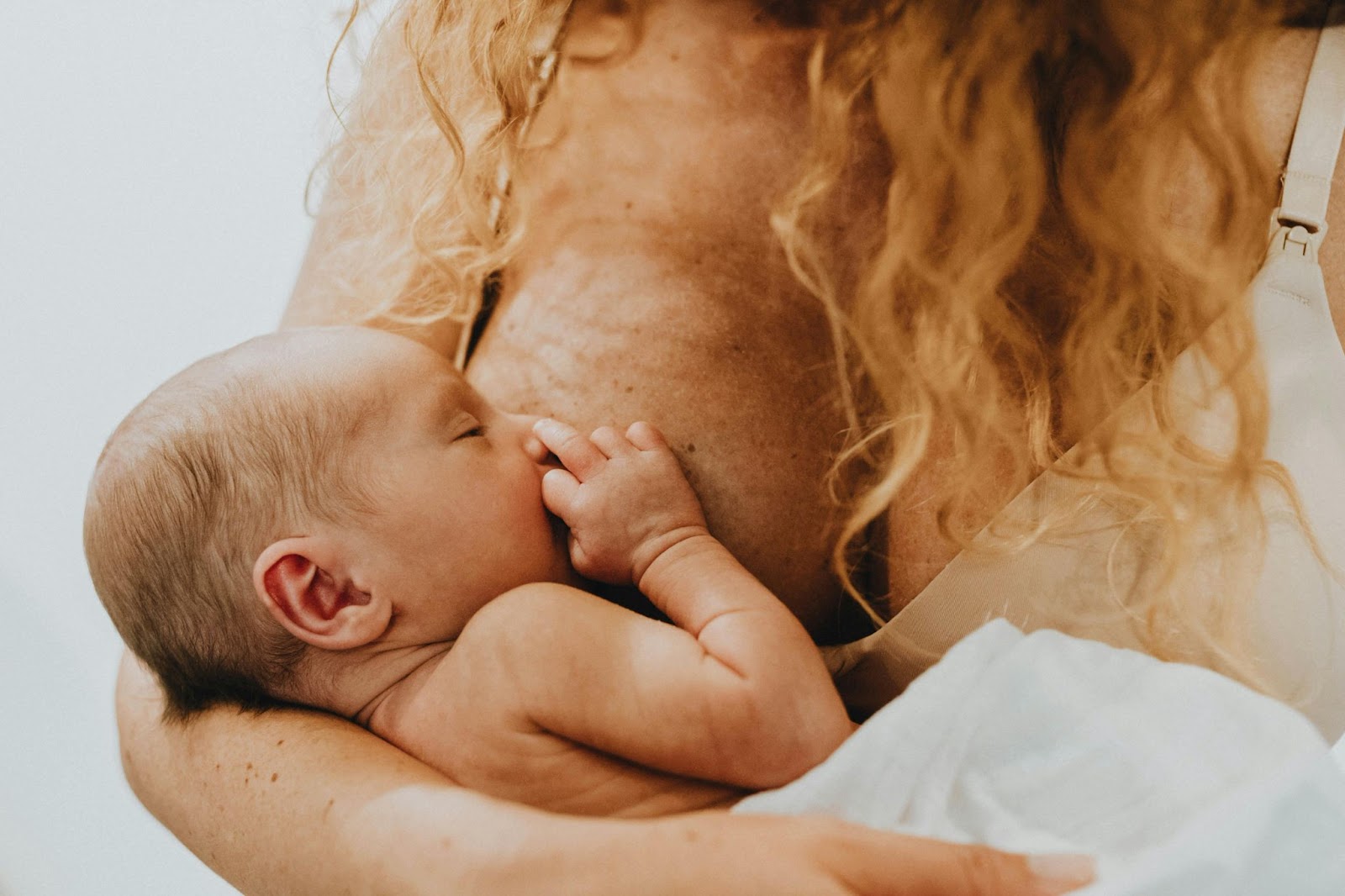 Baby Feeding Schedule from Newborn to 12+ months
Baby Feeding Schedule from Newborn to 12+ months
Here’s a helpful feeding schedule to get you and your baby off on the right track:
- 0 to 1 week old: 1 to 2 ounces per feeding (8-12 feedings per day)
- 2 weeks old: 2-3 ounces per feeding (8-12 feedings per day)
- 1 month old: 2.5 – 3 ounces per feeding (8-10 feedings per day)
- 2 months old: 3-4 ounces per feeding (6-8 feedings per day)
- 4 months old: 4-5 ounces per feeding (6-8 feedings per day)
- 6-12 months old: the amount of milk may begin to decrease slowly depending on solid food intake
Remember, this baby feeding schedule is just a general guide. It’s important to follow your baby’s hunger cues and feed your baby any time they are hungry!
Look for signs that your little one is ready to eat like:
- Rooting
- Opening their mouth
- Licking their lips
- Sticking their tongue out
- Putting their hands or fingers to their mouth
- Munching on their fist
- Sucking or biting on toys or objects
- Fussing or crying
Noticing these signs early will help you keep your baby happy and well fed! Start by feeding your newborn on demand. And as they get older you’ll probably notice that your little one may start to follow a more predictable eating routine.
To help you keep track of your baby’s nursing sessions, use a paper baby feeding log that you keep in your baby’s nursery or a digital baby tracker app like Huckleberry or Baby Tracker..
These apps are a super easy way to log your nursing sessions, including how long your baby nursed on each breast and for how long. This information may be helpful during your child’s pediatrician visits or when you meet with a lactation consultant.
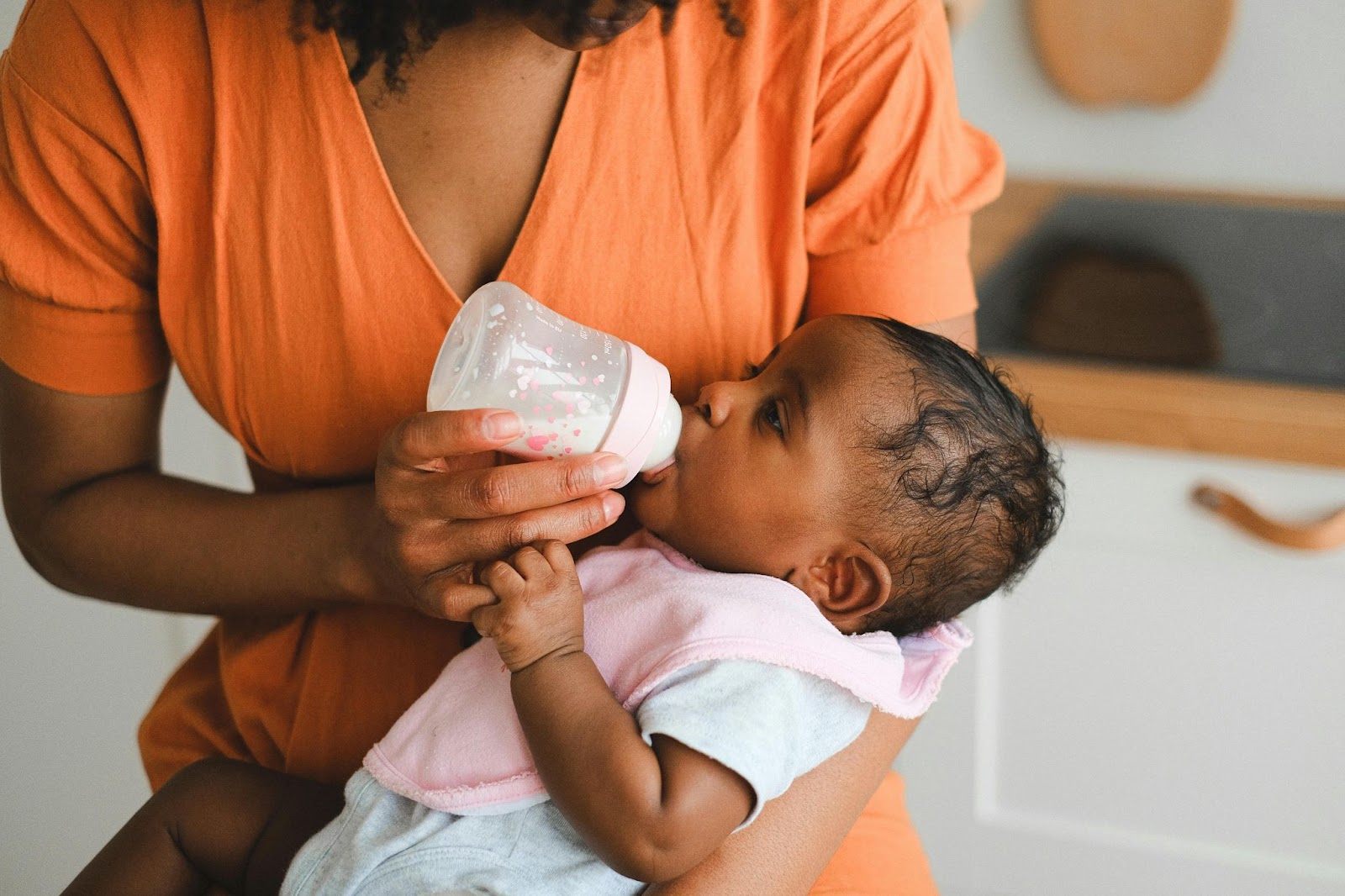 What to Do if You Think Your Baby Isn’t Getting Enough Milk
What to Do if You Think Your Baby Isn’t Getting Enough Milk
If you’re worried your baby isn’t gaining weight as they should, that they’re not producing enough wet and dirty diapers… Or they just seem hungry in between feedings… You may want to meet with a lactation consultant.
A breastfeeding center, like Babies in Bloom, is a wonderful place to connect with International Board Certified Lactation Consultants to help you navigate your baby’s feeding needs.
Your child’s pediatrician can also refer you to a lactation consultant — they may even have one of staff at their office!
A lactation consultant can weigh your baby, watch a feeding session, and answer any questions you have about your baby’s eating habits. They can also give helpful advice to make nursing more comfortable, enhance your baby’s latch, and boost your milk supply.
Should I See a Lactation Consultant if I Feed My Baby Formula?
For formula-fed and bottle fed babies, a visit with a lactation consultant can be really helpful to address your feeding questions and concerns.
This visit is a great opportunity to make sure you’re using the right type of bottles…the right kind of infant formula…and to address any worries you may have about tongue-tie, reflux, or colic symptoms.
Other Questions About How Much Milks Babies Drink:
Here are some other common questions new parents have about how much milk their baby needs.
How Long Do Babies Drink Milk?
The American Academy of Pediatrics recommends chest/breastfeeding your baby (or using infant formula) as their only source of nutrition until your baby is 6 months old. You can continue to nurse your baby until they are 12 months old or even longer depending on your baby’s needs.
Around your baby’s first birthday, you can start introducing cow’s milk. Other alternative milks are recommended after your little one is two or older.
How Much Milk Does Your Baby Need When Starting Solids
If you introduce your baby to solids before they are 9 months old, they’ll still need human milk or infant formula as their main source of nutrition (AAP). As you offer your little one solids, let them tell you when they’re finished eating
Continue to offer bottle/nursing sessions on demand as you did before introducing solids. As your baby grows, they’ll gradually consume more solids and less milk. Every baby is unique and it’s best to let your little one make this transition at their own pace.
What Age Do Babies Stop Night Feedings
Some babies stop needing a night feeding between 2-4 months of age. By the time your baby weighs at least 12 pounds, most formula-fed babies no longer need a night feeding. But even at 4 months, many babies still need a night feeding…or two…or even three!
Your baby will gradually need fewer night feedings as they are able to drink more milk throughout the day, as they start eating solid foods, and their sleep patterns mature.
What Age Does a Baby Stop Drinking Milk?
That depends! If you feed your baby infant formula, you can gradually shift your baby to cow’s milk around their first birthday. Talk to your child’s pediatrician about the best time to make this transition to keep your baby on track with their height, weight, and other growth charts.
If you chest/breastfeed, it may be hard to predict when your baby will stop drinking milk. Most likely your baby will wean off human milk naturally at some point. This could happen anytime before or after their first, second, or even third birthday!
Your little one may choose to stop nursing as they begin to prefer solid foods or enjoy their bottles of cow’s milk. Keep responding to your baby’s hunger cues and offering them feedings on demand.
If you want to stop nursing your baby, you may want to talk with your pediatrician or lactation consultant before making this transition to check on your baby’s growth and nutritional needs.
Want to Schedule a Session with an IBCLC Lactation Consultant?
Call 760-940-BABY or visit Babies in Bloom to schedule a one-on-one session with one of our amazing International Board Certified Lactation Consultants.
Our IBCLC can help you:
- Tackle your questions about breastfeeding
- Conquer those tricky breastfeeding positions
- Position and latch your baby with ease
- Deal with any breastfeeding difficulties you’re struggling with
- Breastfeed twins or triplets
- Breastfeed a premature or special needs baby
- Breastfeed even when medical issues arise with mom or baby
1:1 lactation consultations are available in our office or virtually. We also offer group classes as a resource for breastfeeding mamas. Check out our latest classes offered at the boutique and on-demand:


